The International Robot Exhibition 2017 (iREX2017) was held at Tokyo Big Sight from November 29 to December 2, 2017. The massive venue housed numerous robots not only from all over Japan but also from the entire globe! The majority of the robots were single-arm or dual-arm industrial robots, but there were a few humanoid robots exhibited. It was like a scene from sci-fi anime in a real life!
Of the many booths, the one from Kawasaki Heavy Industries, or Kawasaki, attracted many visitors who were gazing at each of the models with keen interest. Kawasaki exhibited humanoid robots to mark the 50th anniversary in their history of robotics business this year. The company has mainly focused on releasing industrial robots; nevertheless, they have embarked on their path as a fully integrated robot manufacturer.
What kinds of robots were shown at iREX2017? Let’s take a look.
The near future when man-sized robots become common in the household
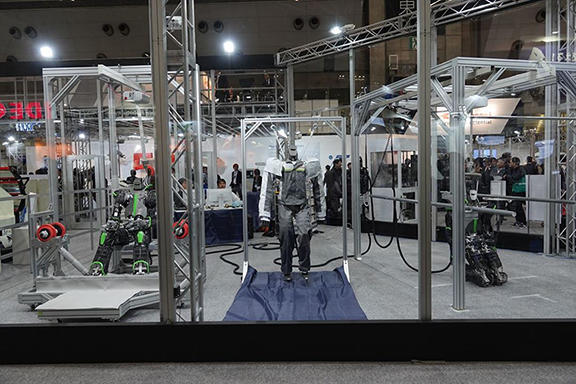
Displayed at the center of the booth was this robot developed by Kawasaki to serve as a conceptual model for humanoid robots. It is yet to be named.
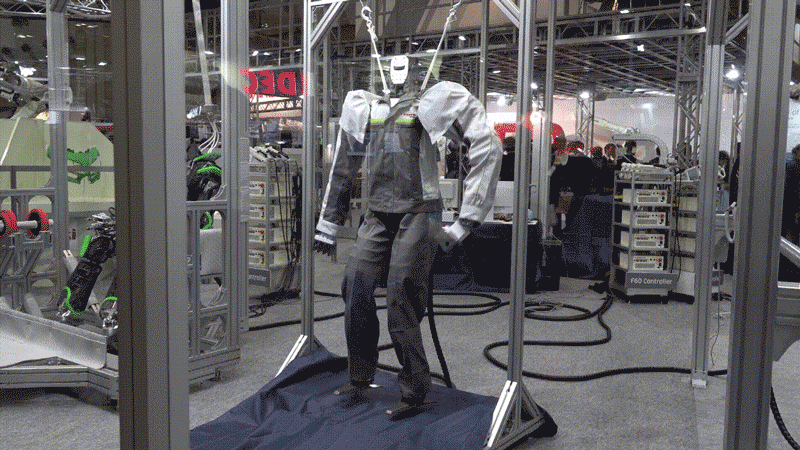
This is an endoskeleton-style robot developed to come close to the size and weight of an adult male. The shoulders and arms are thicker than a human but the head, torso, and legs are almost the same size. Its height is 175cm/5.7ft, and the weight is 80kg/176lbs – just like a grown man.
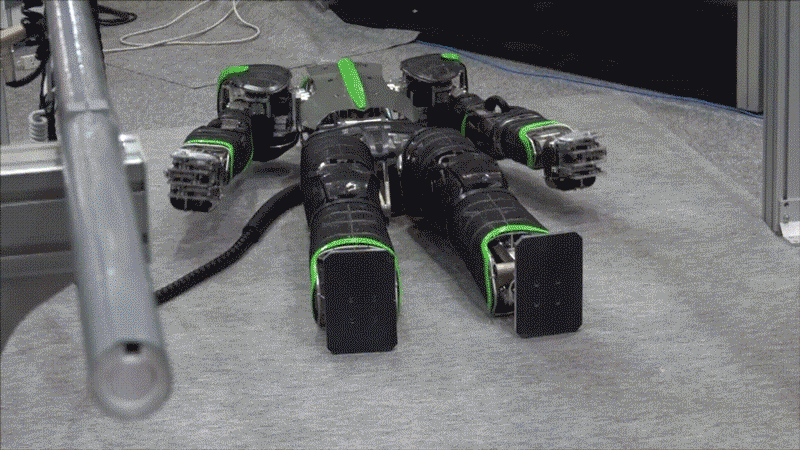
Robots must not be broken down. If it is, it must be able to be repaired fast. This humanoid robot is durably designed based on Kawasaki’s philosophy that a humanoid robot from an industrial robot manufacturer needs to be as reliable and as robust as industrial robots.
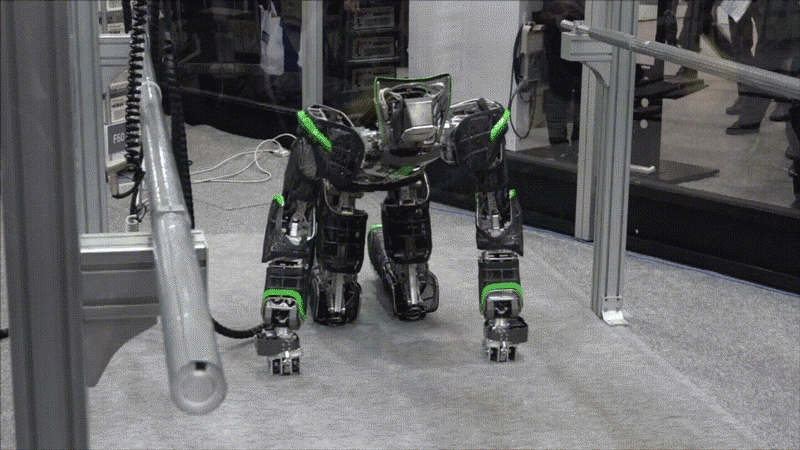
It is capable of multiple movements and is assembled with common, yet highly reliable parts that are generally utilized for industrial robots and that are also low-cost due to mass production.
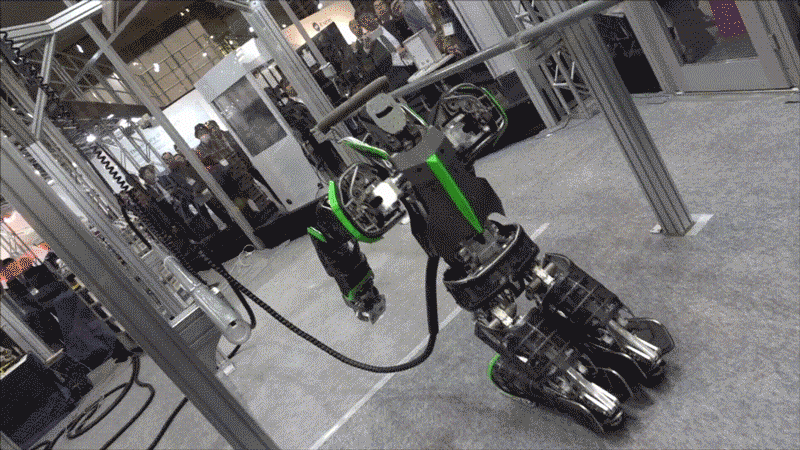
It appears heavy, but take a closer look.
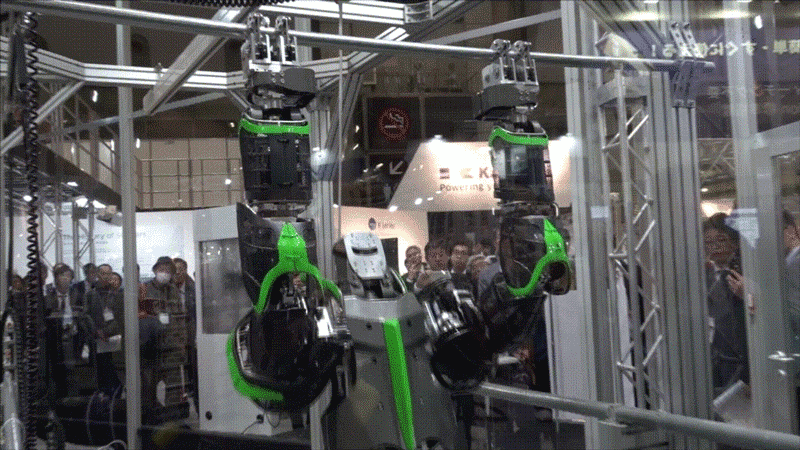
It’s powerful enough to lift itself and do pull-ups on a steel pipe.
Because they are intended to function in a human society, these humanoid robots are designed to be of the same size and strength as that of human beings. Perhaps these robots will come to our households and hopefully perform chores for us in the future.
Apprentice robots reproducing humans’ subtle touch mastered through experience
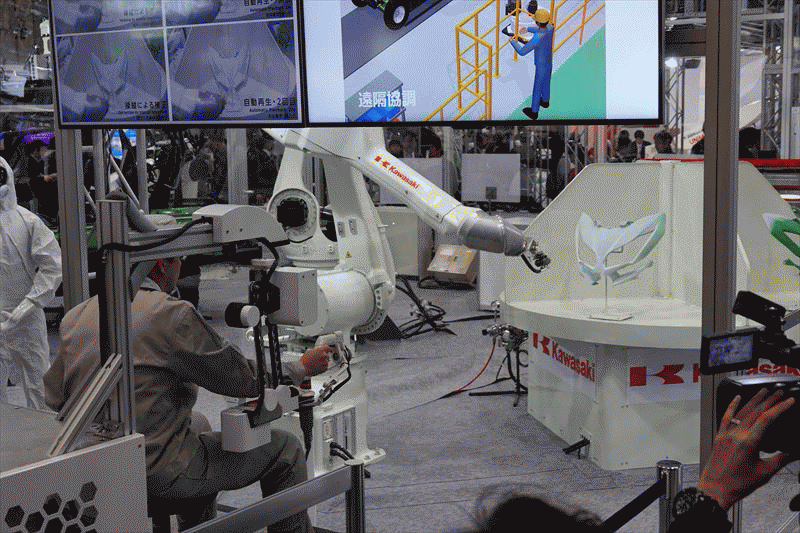
Using the remote controlling unit, the engineer mentors the robot how to spray.
It is difficult to pass down craftsmanship. These skills cannot be quantified, and it would be a challenge to even verbalize them.
The technique of spray painting is no exception. For example, the job of applying even and smooth coats of paint on the complex form of a motorcycle cowl has always been done by a human technician for each and every piece, and the movement of this job was never something a robot can reproduce with ease. It’s not as if you can say, “Feel. Don’t think!” to a robot, right?
Until now, industrial robots have been specifically programmed to move each of their joints at the designated time, at a given angle, and in a designated degree of rotation. The task is done to perfection as long as the program is complete, but it can only get so far in reenacting flexible movements as in a human hand, for example.
This is where Kawasaki’s new robot system, Successor, steps up to the plate. The robot traces the movements of the skillful engineer. Then it learns the sensations and the subtle touches such as controlling the force based on the pressure felt in the fingers or the slightest movements of the wrist, which are difficult to convey in words and figures.
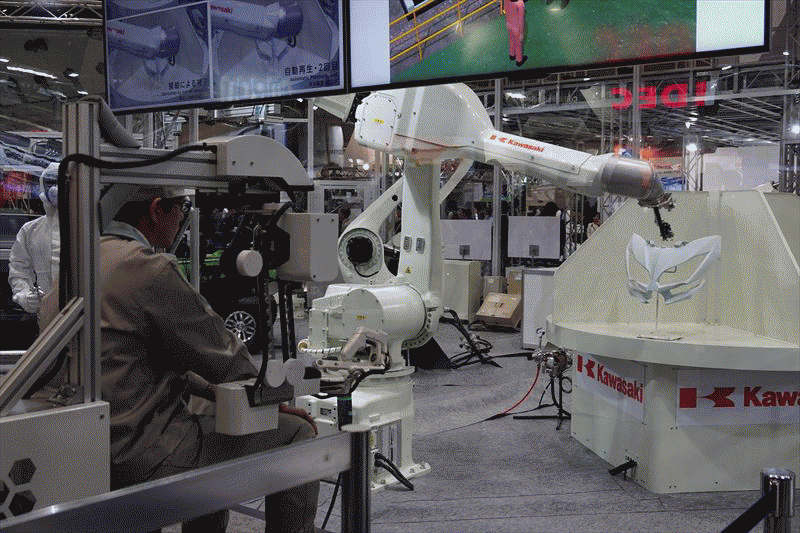
The robot can spray with precision without the engineer touching the controlling unit.
The learned Successor will have the input of the movements and hence is able to carefully reproduce the task of its mentor. It will have acquired the full mastership of the craft.
duAro to co-work with humans at production lines
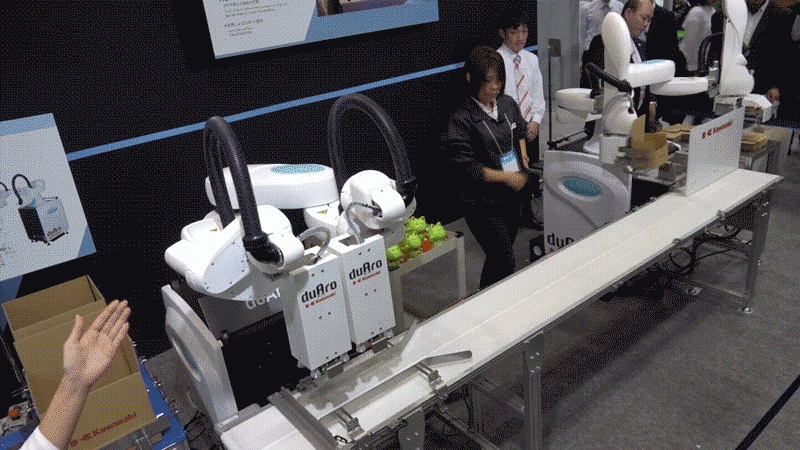
Robots are very proficient in production lines. However, in a field where the shipments of products change each season, industrial robots could not be programmed in time and it proved faster to proceed with all of the tasks manually. Such cases were common.
This is where the dual-arm SCARA robot, duAro, comes into play. The body is small enough to fit into a space for a single person and is equipped with two arms. The robot can be positioned in the same production line together with humans who will take on the complex tasks to leave the repetitious work to the robots, thereby dividing the roles to proceed with the production flow.
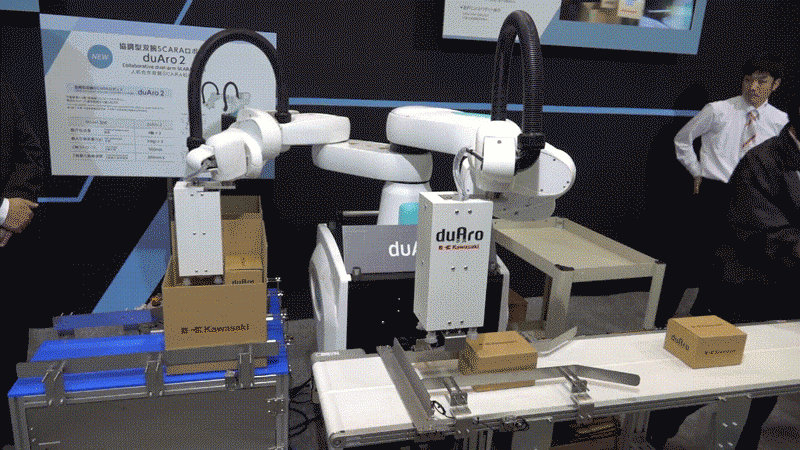
Simply automating the routine task of packing the specific-sized boxes in the shipping cartons will significantly reduce the strain on workers.
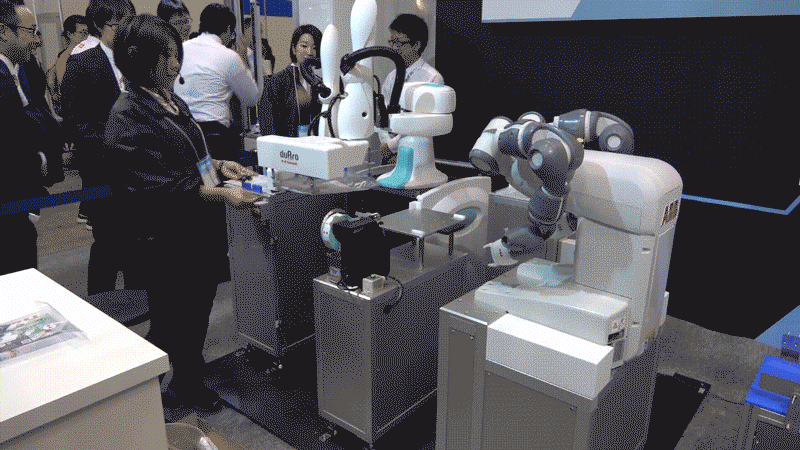
duAro is an expert at collaborating with human beings and it can be voice-controlled to heed instructions such as, “Go slower” or “Stop.” Doesn’t this sound much like the smart speakers that are the talk of the town right now?
If a defective product is found, a mere “Okay, stop!” will put the task to a halt. The task can start slow in the beginning until humans become used to the procedure, and then gradually speed up the flow by instructing duAro to “Go faster.” There are many possibilities of how this can work.
Kawasaki to become a game changer with the 50-year history of robotics business
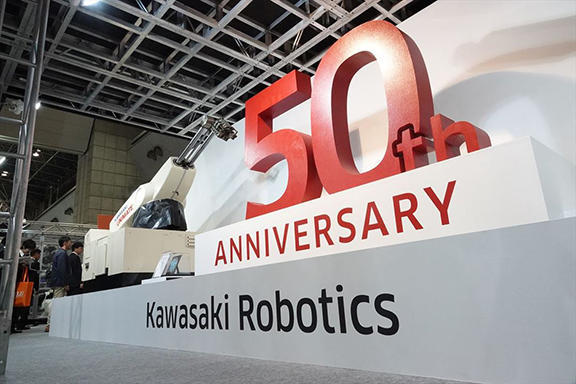
It has been 121 years since the company was established in Kobe. When you hear “Kawasaki”, the first thing comes to your mind might be an image of a motorcycle manufacturer. However, Kawasaki has esteemed history of designing and manufacturing ships, railways, aircrafts, and even massive bridges. In doing so, they entered on their expansion into the industrial robot field 50 years ago.
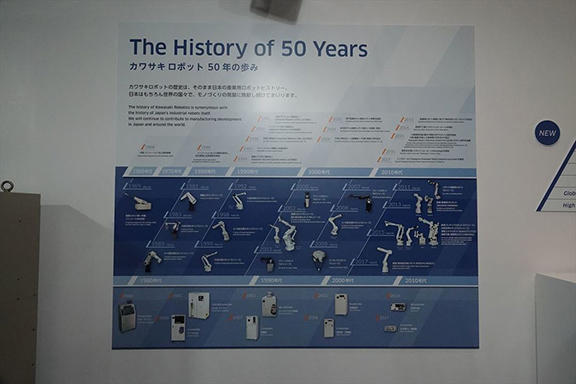
In 1968, Kawasaki signed a licensing agreement with Unimation, an American robot manufacturer. In 1969, the company released the Unimate 2000, the first robot to be produced in Japan. Since then, they have continued to produce industrial robots in various fields, including general purpose robots, painting robots, pick and place robots, medical robots and more.
It is because of Kawasaki’ high reliability that they have continued to make a difference at the forefront of the industry after all these years. Hats off to their extensive history of producing hard-working robots to help mankind.
We often encounter news of concept robots, but it appears the real deal business-to-business type models have also been making progress.
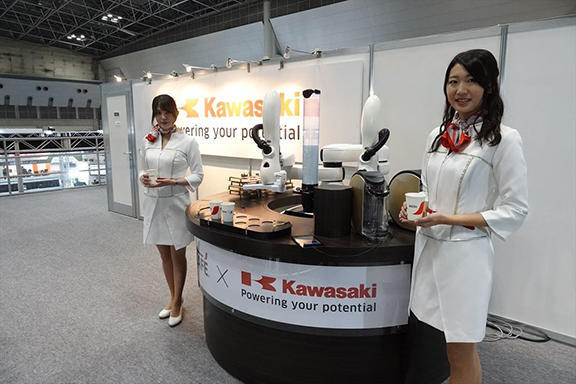
The above is a robot programmed specifically for serving coffee. It can insert cups into the four coffee machines and then arrange them neatly on a tray once the cups are filled with coffee. Wouldn’t this be a must-have in a meeting room where the flows of visitors and guests are endless?
What kinds of robots will we be hearing from Kawasaki in the future? Let’s keep an eye out!
Photo & Movie: Ryota Musha
Writer: Ryota Musha
Read the original article on GIZMODO JAPAN 12.06.2017 * Available in Japanese.